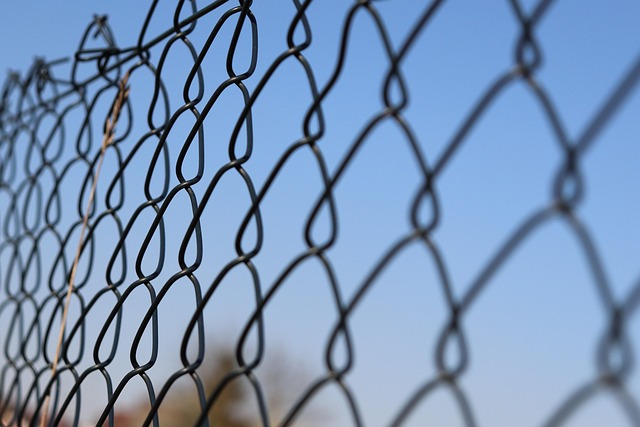Introduction:
For New Bedford, Massachusetts property owners, maintaining your fence throughout the year is essential to ensure its longevity and aesthetic appeal. This article guides you through the seasonal fence maintenance routine tailored to the region’s climate. From understanding climate-specific challenges to practical tips for cleaning, inspection, protection from winter damage, and seasonal upgrades, these recommendations will help keep your fence robust and well-maintained. By following these steps, you’ll extend the life of your investment and maintain a beautiful outdoor space.
- Understanding New Bedford's Climate for Fence Maintenance
- Seasonal Cleaning and Inspection Tips for Longevity
- Protecting Fences from Winter Damage
- Spring Preparation: Repairs and Upgrades
- Summer Maintenance: Keeping Fences Strong
- Fall Cleanup and Storage for Optimal Fence Health
Understanding New Bedford's Climate for Fence Maintenance
New Bedford, Massachusetts experiences all four seasons, each with its unique weather patterns. Understanding this climate variation is crucial when it comes to fence maintenance. The harsh winters can bring freezing temperatures and heavy snowfall, causing potential damage to fences if not properly prepared. Spring often brings a mix of sunny days and unexpected rain showers, accelerating growth but also increasing moisture levels, which can impact wooden fences. Summers are typically warm and humid, creating an ideal environment for growth but also making wood more susceptible to rot and fungus. Fall is characterized by cooler temperatures and changing foliage, signaling the end of the growing season and a time to prepare for winter.
Given these seasonal shifts, regular maintenance becomes essential for keeping New Bedford fences in top condition. This includes tasks like inspecting for any signs of damage or decay during warmer months, cleaning and sealing wooden fences to protect against moisture, and ensuring proper drainage to prevent water accumulation. By being proactive throughout the seasons, homeowners can extend the lifespan of their fences and ensure they remain both functional and aesthetically pleasing.
Seasonal Cleaning and Inspection Tips for Longevity
Regular cleaning and inspection are vital to ensuring your fence remains in top condition throughout the seasons. In New Bedford, Massachusetts, where varying weather conditions can take a toll on outdoor structures, dedicated maintenance is key to longevity. Start by removing any debris, such as leaves and branches, that may have accumulated over winter or during heavy storms. This simple step prevents blockages that could hinder water drainage, leading to potential rot or corrosion.
For wooden fences, consider applying a fresh coat of sealant or paint every few years to shield it from the elements. Inspect all panels, posts, and gates for signs of damage, including cracks, splinters, or rot. Addressing these issues promptly will prevent them from escalating, ensuring your fence remains not only functional but also aesthetically pleasing.
Protecting Fences from Winter Damage
Winter can be harsh on fences, especially in regions like New Bedford, Massachusetts, where snow and freezing temperatures are common. To protect your fence from potential damage, start by inspecting it thoroughly before the first frost. Look for any weak spots, loose panels, or damaged posts. Repair or replace these areas to ensure the fence is structurally sound.
Consider applying a protective coating or sealant to the fence. This can help insulate wood and metal fences from the cold, preventing rot and rust. Additionally, clearing snow and ice promptly after storms will reduce pressure on the fence, minimizing the risk of broken posts or panels. Wrapping tree branches or other objects around the fence before winter storms can also offer some protection against flying debris.
Spring Preparation: Repairs and Upgrades
As spring arrives, it’s time to prepare your New Bedford, Massachusetts fence for the warmer months ahead. This is an ideal period to assess any damage incurred during winter and plan necessary repairs or upgrades. Check for loose or damaged boards, rot, or weak posts. Replace or repair these components to ensure your fence is strong and secure.
Spring is also a great time to consider enhancing your fence’s aesthetic appeal. You can update its look with new paint or stain, add decorative elements like trellises or arbors, or even install lighting for enhanced security and visual interest. These upgrades not only beautify your property but also increase the overall value of your New Bedford home.
Summer Maintenance: Keeping Fences Strong
During the summer months, New Bedford’s warm weather and increased outdoor activities can put extra strain on fences. Regular maintenance is key to keeping them strong and sturdy. Inspect your fence for any signs of damage or weak spots, such as loose or rotten boards, broken posts, or rusted hardware. Promptly repair or replace these components to prevent further deterioration.
Applying a fresh coat of paint or sealant can also protect the fence from the elements, enhancing its longevity. Keep the area around the fence clear of debris and overhanging branches that could cause damage during storms or strong winds. Regular trimming will not only improve the fence’s aesthetic appeal but also ensure it remains in good condition for years to come.
Fall Cleanup and Storage for Optimal Fence Health
As the leaves change color and temperatures drop, it’s crucial to prepare your fence for the impending winter in New Bedford, Massachusetts. Start by removing any debris, such as branches or fallen leaves, that may have accumulated along the fence line during the fall season. This not only enhances its aesthetic appeal but also prevents potential damage caused by heavy snow or ice accumulation.
Next, thoroughly clean the fence using a pressure washer or a bristled brush to remove dirt, grime, and any remaining debris. After cleaning, inspect the fence for any signs of wear, rot, or damage. Repaint or seal any exposed wood to protect it from the upcoming cold weather. Lastly, store any tools, equipment, and spare fence parts in a secure, dry location to ensure optimal fence health until next spring.
